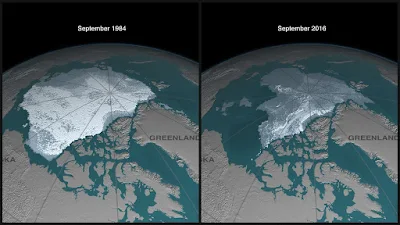This visualization begins by showing the dynamic beauty of the Arctic sea ice as it responds to winds and ocean currents. Research into the behaviour of the Arctic sea ice for the last 30 years has led to a deeper understanding of how this ice survives from year to year.
- In the animation that follows, the age of the sea ice is visible, showing the younger ice in darker shades of blue and the oldest ice in brighter white.
- This visual representation of the ice age clearly shows how the quantity of older and thicker ice has changed between 1984 and 2016.
Visualizations by Cindy Starr were released on March 13, 2018.

Data may encapsulate the events of a single second or many years; it may span a small patch of Earth or entire systems of suns and planets. Visualizing data within its natural environment maximizes the potential for learning and discovery.
Scientific visualization can clarify data’s relationships in time and space. In this visualization, the issue of the declining sea ice near the North Pole is set in its natural configuration. An analysis of the age of the Arctic sea ice indicates that it traditionally became older while circulating in the Beaufort Sea north of Alaska and was then primarily lost in the warmer regions along the eastern coast of Greenland. In recent years, however, warmer water in the Beaufort Sea, possibly from the Bering Strait, often melts away the sea ice in the summer before it can get older.

Credit:
NASA's Scientific Visualization Studio AMSR2 data courtesy of the Japan Aerospace Exploration Agency (JAXA).
